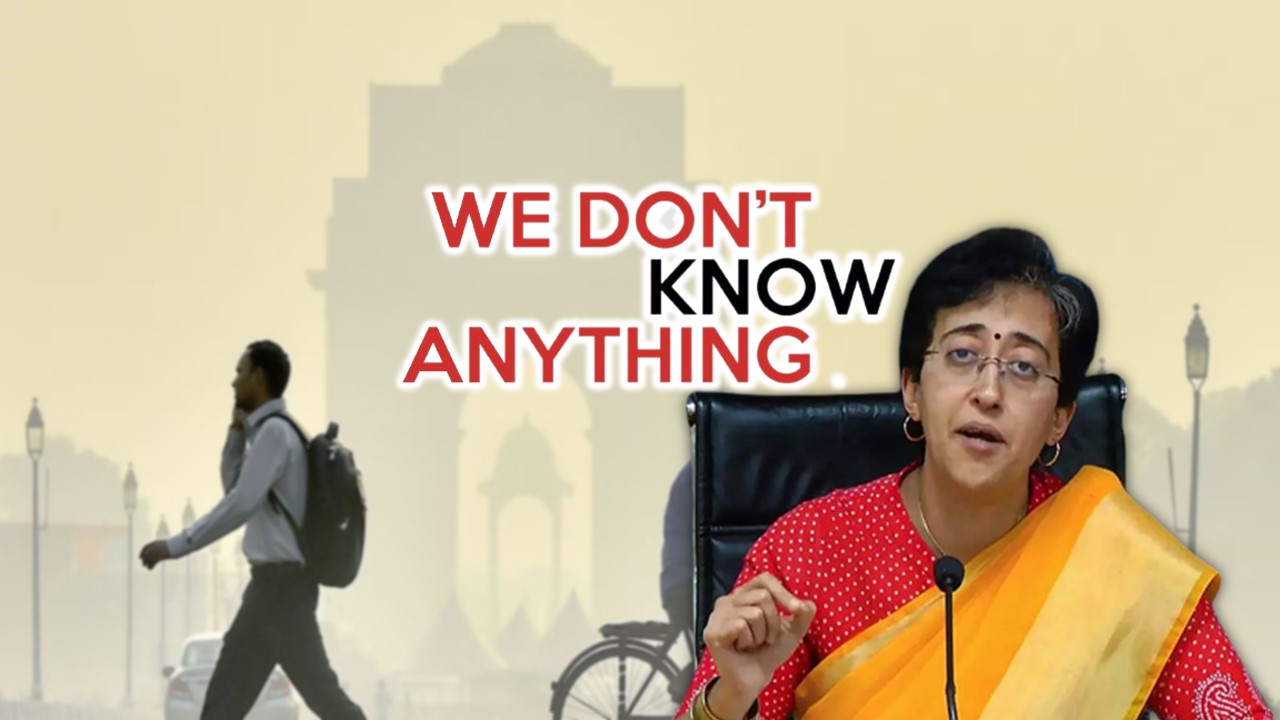Delhi air Pollution: First, it was the festival of Deepavali, celebrated by Hindus with the age-old tradition of bursting fireworks, that came under fire.
Then, an even broader brush was applied as every living particle on earth was seemingly held responsible for transforming Delhi NCR into a living hell from October to November. This collective blame extended to plants, animals, and all things in between, leaving many perplexed and overwhelmed.
As if this blame game wasn’t already complex enough, neighboring states like Punjab and Haryana were next in line. Delhi’s environmental woes were increasingly attributed to their emissions and agricultural practices, creating a ripple effect of finger-pointing.
Now, after nearly a decade of blame-shifting and muck-raking, the Delhi government now claims that it doesn’t know the major constituent of air pollution in their own region. This admission leaves us with an all-encompassing question: If it wasn’t Hindus per se, if Punjab isn’t the root cause, and Haryana can’t be solely blamed, then who or what exactly is responsible for the persistent air pollution in Delhi NCR?
Is this for real?
In a startling revelation, the Delhi government finds itself grappling with a perplexing enigma, year after year—the irreplaceable smog that engulfs Delhi NCR. This conundrum has left both experts and the general populace scratching their heads, as the government appears to be at a loss regarding the primary contributors to this relentless issue.
At the forefront of this baffling situation is Atishi, a prominent leader from the Aam Aadmi Party (AAP) and a key figure in the Delhi government. Just recently, she candidly admitted that there exists no official data to shed light on the various sources responsible for escalating pollution levels in the national capital.
Also read: Air Pollution in Delhi Causes : An Overview
She went on to underscore a fundamental predicament: how can effective policies to mitigate pollution be formulated when the government itself remains oblivious to the magnitude of contribution from each source?
However, it’s worth revisiting a scenario that unfolded three years ago, where Atishi took an entirely different stance. Back in November 2020, she cited data released by the Indian Council for Agricultural Research (ICAR) and boldly proclaimed, “Delhi’s pollution is directly correlated with stubble burning in Haryana and Punjab.”
In that moment, she did not mince her words, urging the Air Quality Commission to take proactive action and press charges of criminal negligence against the Chief Ministers of Haryana and Punjab. Atishi vehemently contended that the rampant stubble burning in these neighboring states was the very cause of “unbearable air pollution” in Delhi.
In her correspondence, Atishi emphatically pointed to the direct correlation between the Air Quality Index (AQI) in Delhi and the frequency of farm fires in Punjab. She underscored the significant improvement in Delhi’s air quality when the incidence of farm fires and stubble burning in Punjab diminished.
However, here we stand in 2023, and the situation on the ground tells a disheartening tale. There has been almost negligible change in the air quality of the NCR, especially during this particular time of the year. This leaves us with a rather disconcerting question: Does the Delhi government truly lack the means to tackle pollution effectively, or is it a case of public trust being taken for granted?
Deepavali was just a pawn?
With the recent revelations from the Delhi government, a disconcerting question lingers: was the festival of Deepavali merely a scapegoat in the long-running saga of Delhi’s air pollution? It’s a query that merits a closer look, given the history of finger-pointing that has transpired.
We need not look far back to recall how certain individuals in positions of authority vehemently and unambiguously pinned the blame for soaring pollution levels on the firecrackers that lit up the night skies during Deepavali. Year after year, Delhi’s Chief Minister, Arvind Kejriwal, and his associates waged a campaign to deter people from partaking in this age-old tradition. They succeeded to the extent that bursting firecrackers became not just a frowned-upon activity but a criminal offense, carrying added penalties for the culprits, though without much success.
Yet, despite mounting evidence to the contrary, their resolve remained unwavering. Even eminent institutions like IIT Delhi presented irrefutable data indicating that firecrackers were not the primary cause of Delhi’s toxic mornings in early November. However, the Delhi administration persisted in vilifying Hindus for celebrating Deepavali with fireworks, casting a shadow over a cherished festival of joy.
Also read: Firecrackers are not behind Delhi’s annual smog mess, IIT Delhi Confirms
In fact, reports from IIT Delhi even highlighted how “biomass-related emissions rise steeply in the days following Diwali, with average levels almost rising by an order of ~2 compared to the pre-Diwali concentration.” Sadly, these astute findings seemed to fall on deaf ears in the corridors of power.
The consequences of these unfounded diktats extend beyond pollution debates. In Sivakasi, the renowned hub of fireworks manufacturing in Tamil Nadu, many livelihoods have been imperiled. The repercussions of the Delhi administration’s stringent stance have reverberated far and wide, leaving people unemployed and communities in distress.
As we stand today, the perplexing question that looms is whether the very government that has been quick to criminalize the bursting of crackers truly comprehends the root cause of Delhi’s air pollution. Are they equipped to address the matter with the acumen and determination it deserves?
Support TFI:
Support us to strengthen the ‘Right’ ideology of cultural nationalism by purchasing the best quality garments from TFI-STORE.COM

